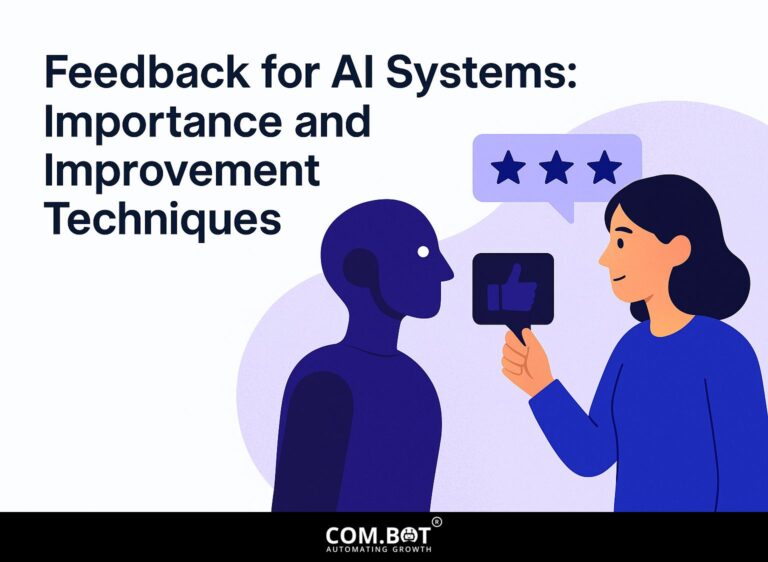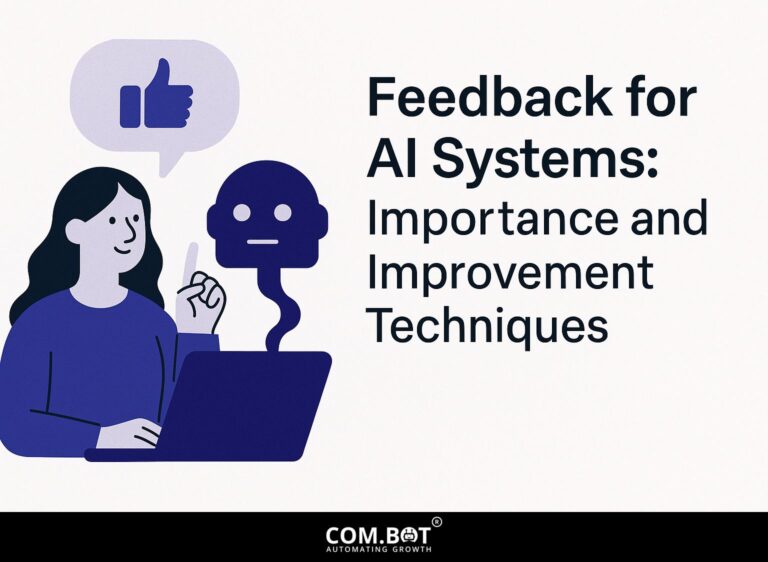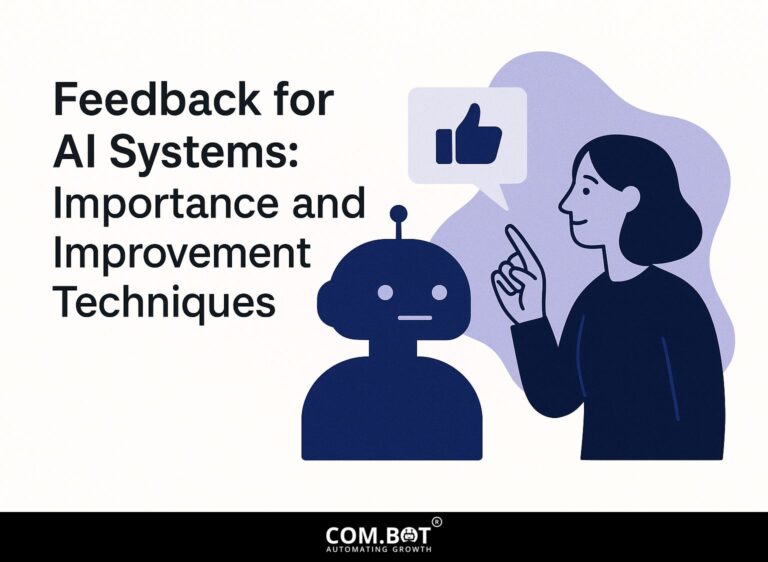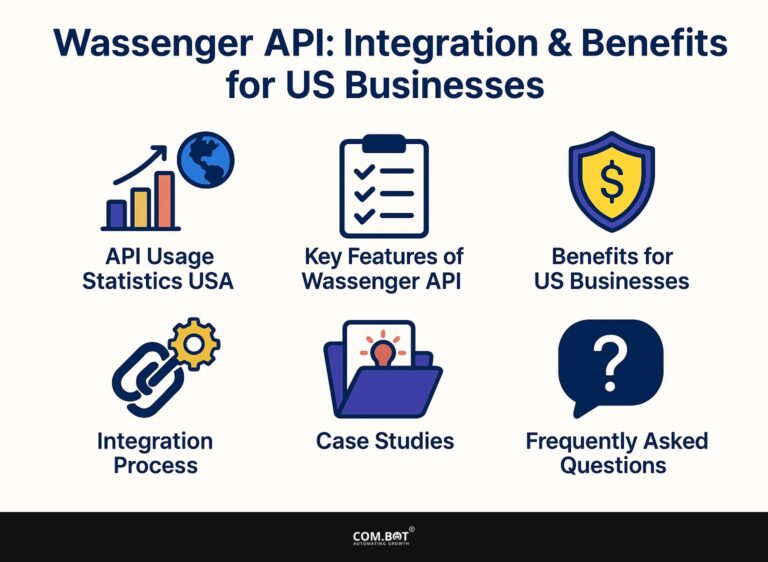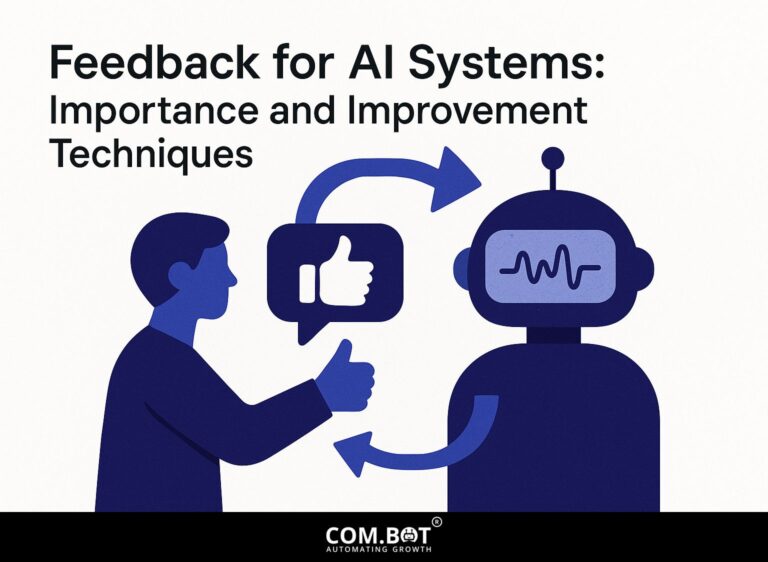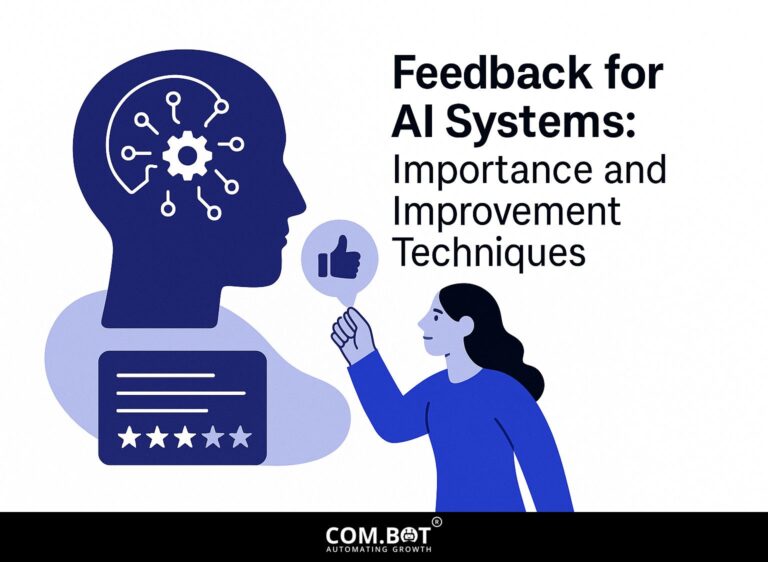Feedback for AI Systems: Importance and Improvement Techniques
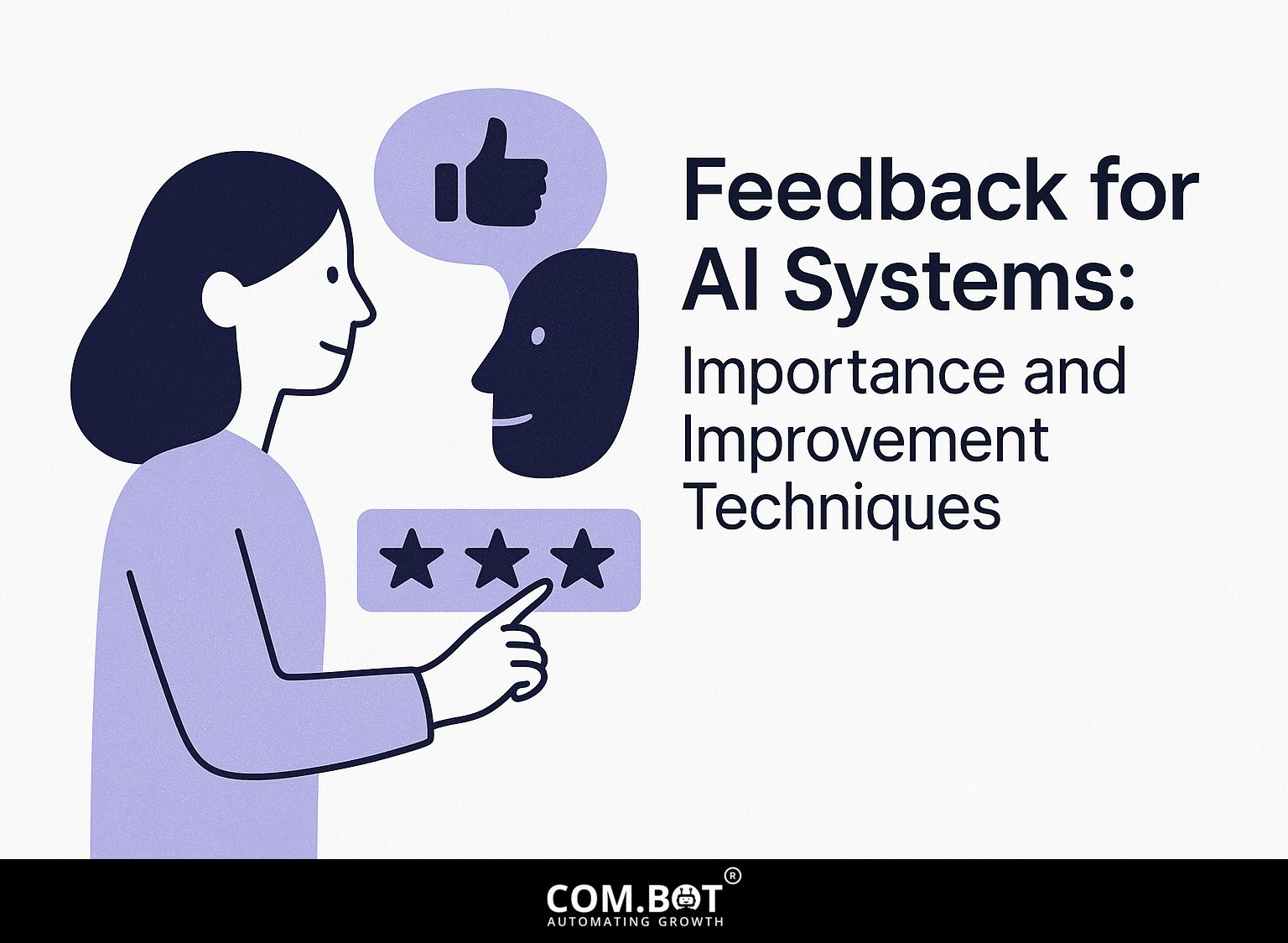
As artificial intelligence technology quickly changes, feedback from people is important for improving machine learning models. Methods such as reinforcement learning gain a lot from the information shared by users. Platforms such as Label Studio help bridge the gap between human input and AI development. This article discusses why feedback methods are important in AI systems and looks at ways to make these interactions better for more effective results and happier users.
Key Takeaways:
- 1 AI Feedback Mechanisms Statistics
- 2 Types of Feedback
- 3 Benefits of Effective Feedback
- 4 Challenges in Gathering Feedback
- 5 Techniques for Improving Feedback Loops
- 6 Case Studies and Applications
- 7 Future Directions
- 8 Frequently Asked Questions
- 8.1 What is the role of feedback in AI systems?
- 8.2 Why is feedback important for AI systems?
- 8.3 What are some techniques for improving feedback in AI systems?
- 8.4 How can feedback help to address bias in AI systems?
- 8.5 What are the benefits of incorporating feedback into AI systems?
- 8.6 Can feedback be used to improve AI systems in real-time?
Definition and Overview
In AI, feedback is how AI models improve by learning from their previous results, which greatly affects how they make decisions.
This process is essential in methods like reinforcement learning, where agents get feedback from their surroundings to improve actions.
In a gaming AI, the result of a game helps the algorithm evaluate and improve strategies for future games.
In supervised learning, people help improve AI results by labeling data, which teaches the model to produce correct answers.
Tools like TensorFlow and PyTorch facilitate these learning processes, allowing developers to implement feedback loops effectively, enhancing the accuracy and efficiency of AI systems.
Importance of Feedback Mechanisms
Feedback mechanisms help AI systems continuously improve by integrating user interactions and expert input into their training processes.
These methods keep data quality high by regularly checking performance, tracking errors, and collecting user feedback.
For example, systems can use tools like Google Analytics to study user interactions and A/B testing to improve algorithms.
Using organized surveys lets users give feedback on how AI is doing, which can be added back to the system for adjustments. If you’re interested in a deeper dive into these techniques, you might find our comprehensive guide on the importance of feedback for AI systems particularly enlightening.
Repeating this process allows users to learn and build trust in the system, as they observe ongoing enhancements in AI’s response accuracy.
AI Feedback Mechanisms Statistics
AI Feedback Mechanisms Statistics
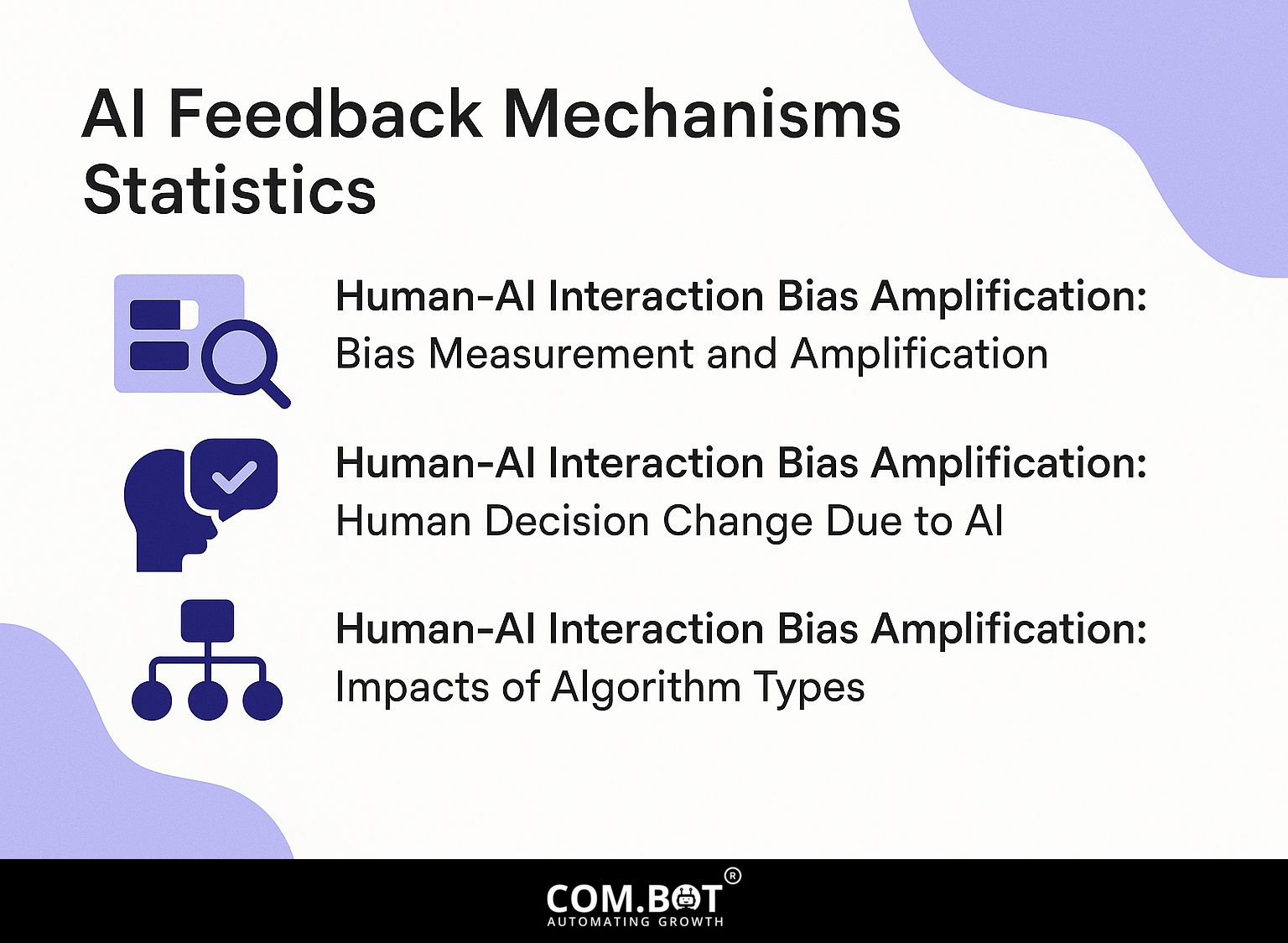
Human-AI Interaction Bias Amplification: Bias Measurement and Amplification
Human-AI Interaction Bias Amplification: Human Decision Change Due to AI
Human-AI Interaction Bias Amplification: Impacts of Algorithm Types
The AI Feedback Mechanisms Statistics presents a detailed examination of how human and AI interactions can affect and increase biases. This data is important for grasping how AI systems work in decision-making and their ability to reduce or increase existing biases.
Human-AI Interaction Bias Amplification reveals that initial human bias is measured at 53.08%. However, when AI systems are involved, this bias becomes more noticeable. 65.33%. The amplification occurs as AI systems, often trained on biased data, reinforce these biases in their outputs. Following interaction with AI, human bias slightly reduces to 56.3%, indicating some reflection or adjustment but not a complete mitigation of the amplified bias.
- Human Decision Change Due to AI: When humans encounter AI systems that disagree with their initial judgments, 32.72% of decisions are changed. This statistic shows how AI can strongly affect the choices people make. The Baseline Sad Classification stands at 49.9%, but increases to 56.3% after AI involvement, suggesting that AI might affect emotional perception and classification tasks.
- Impacts of Algorithm Types: The impact of algorithm types is also measured, with bias being higher in systems using a biased algorithm at 2.66, compared to an accuracy level of 1.55 with an accurate algorithm. This comparison shows the importance of using fair and accurate algorithms to achieve reliable results and reduce the risk of spreading bias.
The data shows that AI systems can increase human biases and influence decision-making. It highlights the importance of building and using AI systems that prioritize accuracy and fairness to minimize negative effects. Grasping these dynamics is important for setting up effective measures to make sure AI systems contribute to fair and unbiased decision-making processes.
Types of Feedback
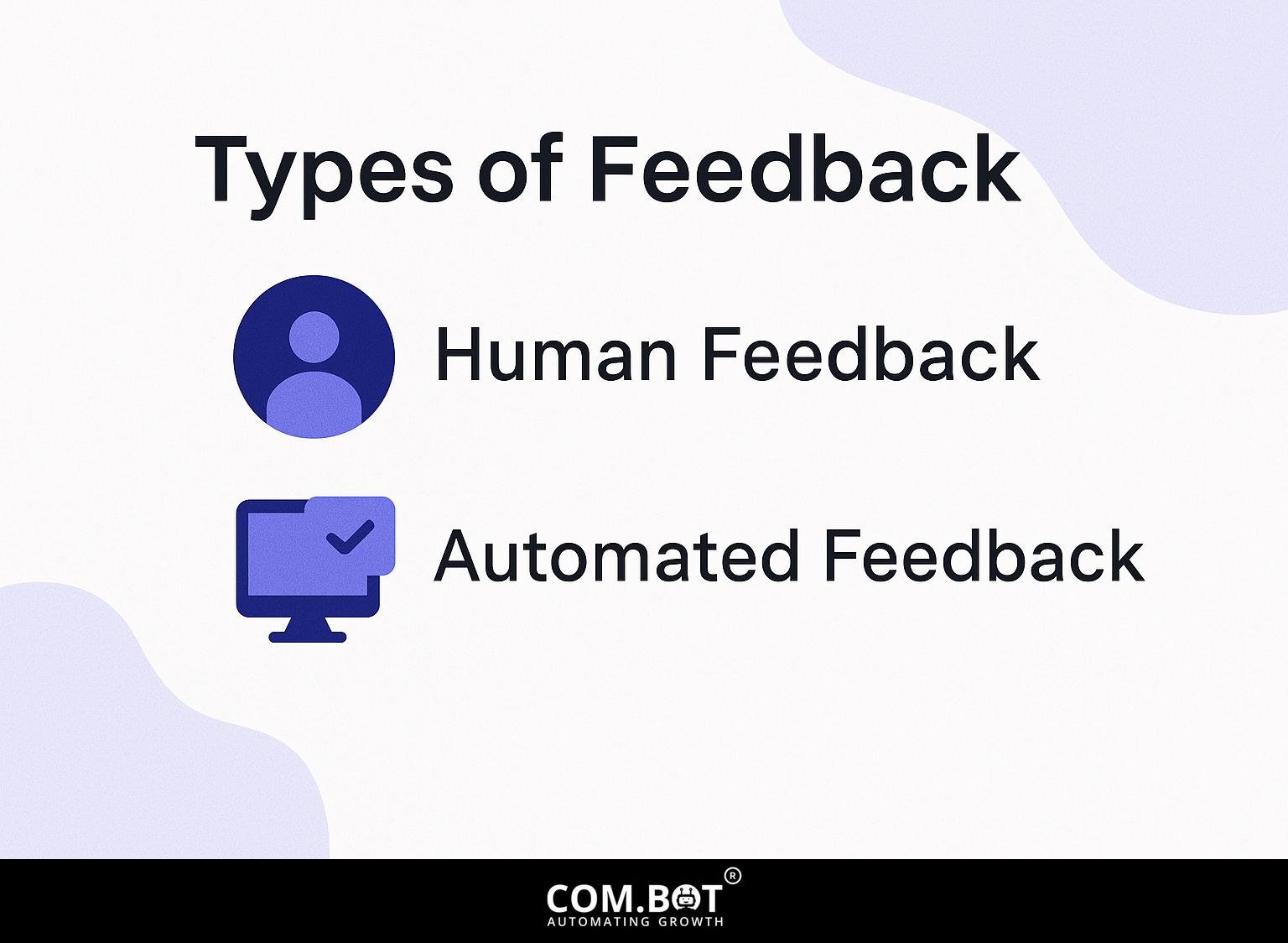
AI feedback falls into two categories: feedback from people and feedback from machines. Each type has its own role in training and improving models (our guide on feedback for AI systems explores how these categories contribute to system enhancement).
Human Feedback
Human feedback is important, where specialists offer guidance that affects AI choices, especially in difficult areas like healthcare and finance.
For example, in healthcare, clinicians often review and annotate patient data used to train AI models. These professionals help identify relevant features that improve diagnosis accuracy.
In finance, experts can review algorithmic trading choices, providing immediate feedback to improve results. Cognitive biases, such as overconfidence or confirmation bias, can skew AI training unless mitigated by diverse expert opinions.
Using knowledge from specific areas is important to make sure AI tools operate effectively, follow ethical standards, and can be relied upon.
Automated Feedback
Automated feedback relies on performance data and predictive checks to make AI training more efficient, eliminating the need for people to be involved.
By analyzing real-time data, tools like TensorFlow and Amazon SageMaker can automatically adjust their algorithms for better accuracy.
For instance, TensorFlow can track how the model performs on various parameters, recalibrating based on this performance. This approach aligns with the principles outlined in our analysis of Feedback for AI Systems: Importance and Improvement Techniques.
Real-time monitoring dashboards, such as Grafana, visualize data trends, enabling teams to spot inefficiencies immediately.
Connecting these systems makes it easier to make decisions, greatly improving training results and lessening the need for constant manual supervision.
Benefits of Effective Feedback
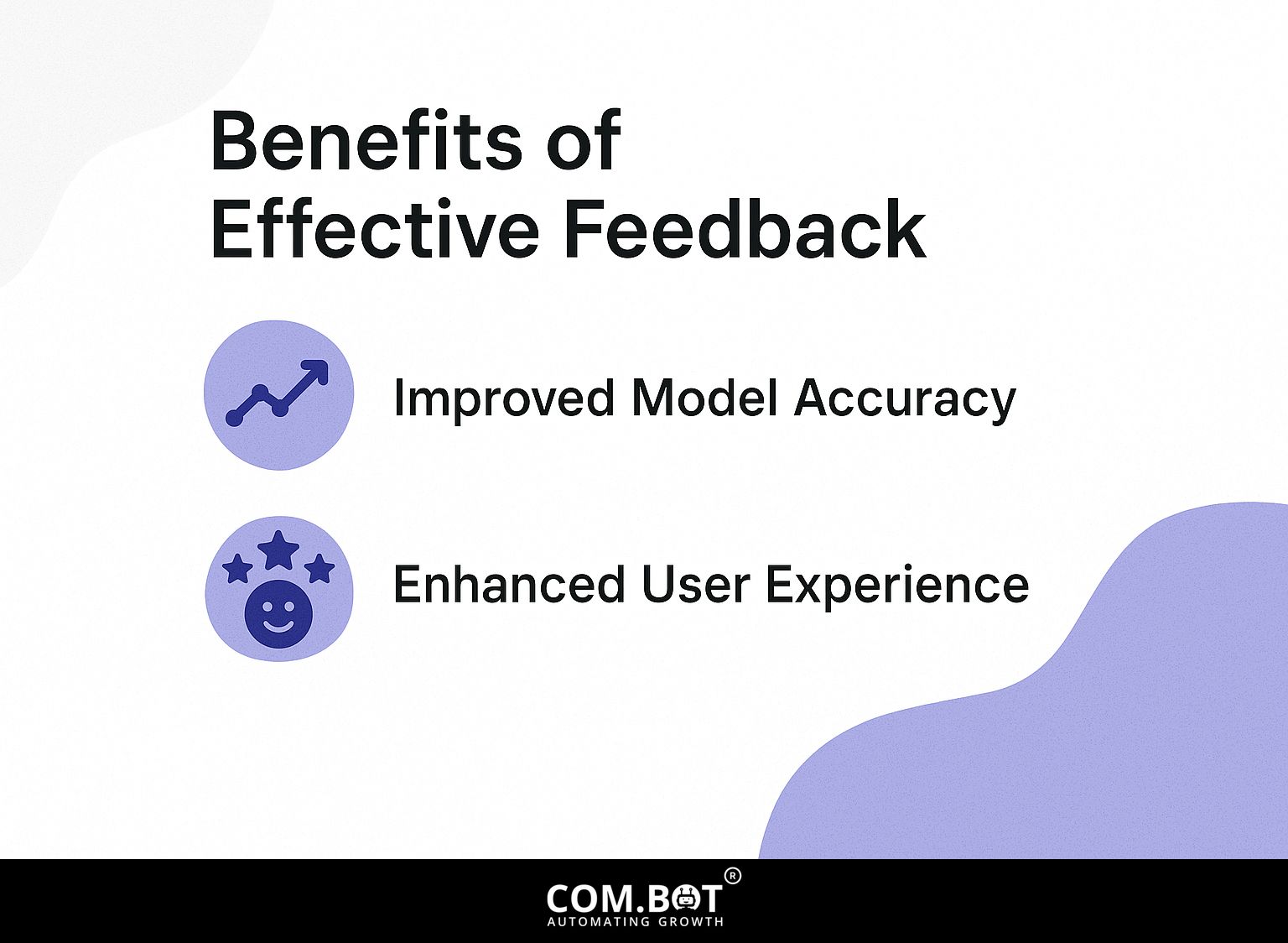
Using effective feedback methods can greatly improve AI model accuracy and user experience.
Improved Model Accuracy
When models receive organized feedback, their accuracy can increase by as much as 30%, showing the benefits of learning through repetition.
One useful way to include feedback is by using a feedback loop, where users share their thoughts on model predictions. For instance, using platforms like Amazon Mechanical Turk can help gather real-world feedback on model outputs.
Employing A/B testing allows for direct comparison of previous models against new iterations, clearly illustrating improvements in accuracy.
Another important method involves studying incorrect classifications and sorting them, which helps data scientists improve algorithms in a targeted way, improving the model’s overall performance while adjusting to user requirements.
Enhanced User Experience
User experience can be greatly improved by adding feedback loops that let AI systems adjust to user preferences all the time.
For example, Spotify has managed to use feedback systems effectively by letting users rate songs and playlists with thumbs up or down. This results in music suggestions that better match individual preferences.
Chatbots like Drift use analysis of conversations to improve their responses. This enhances customer communication by giving clearer responses to common questions over time.
To make use of these systems, think about adding tools like UserVoice to gather user opinions or Mixpanel to study interaction data.
These tools help create a user-focused approach, leading to higher satisfaction and involvement.
Challenges in Gathering Feedback
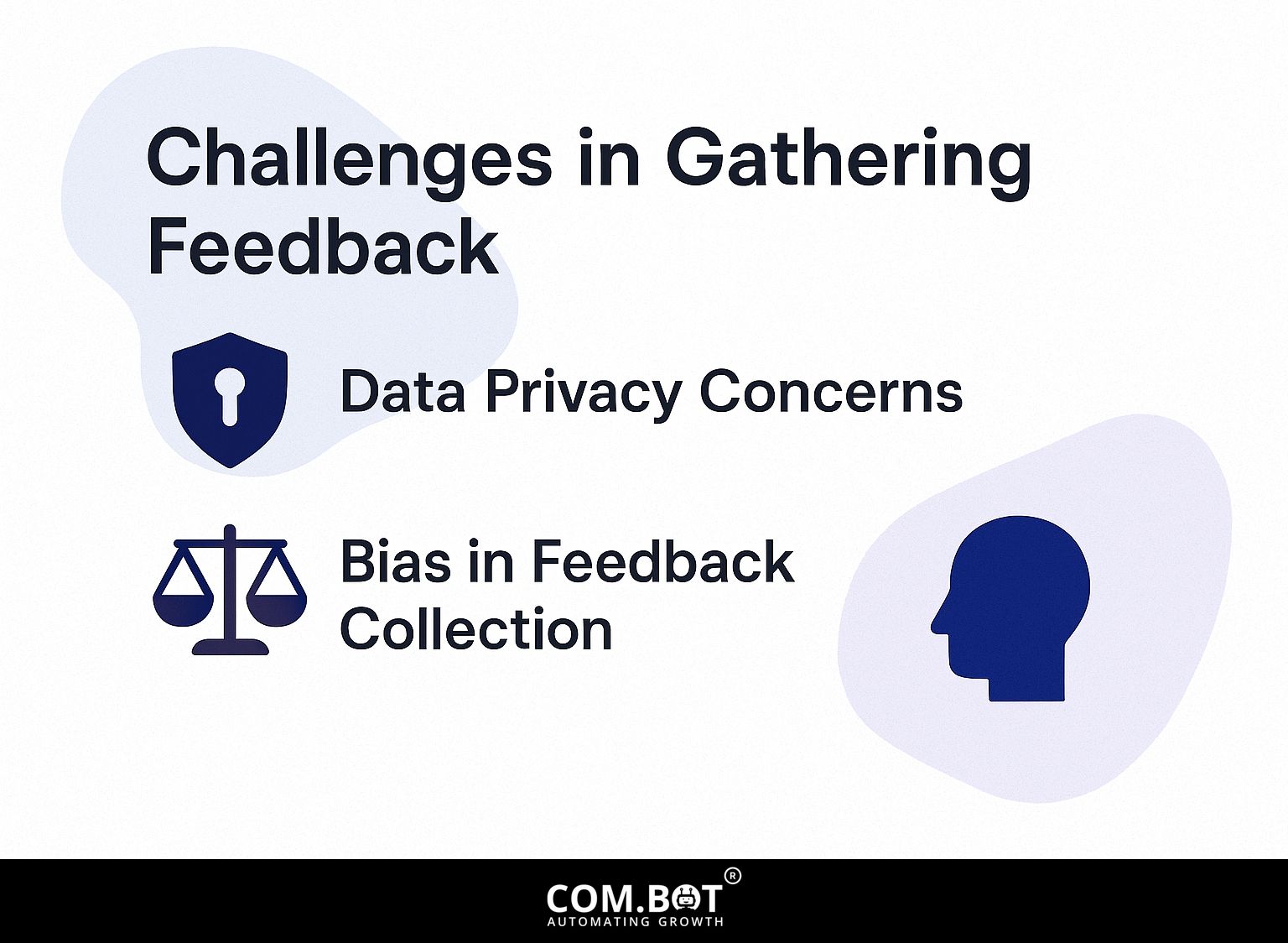
Collecting feedback for AI systems is essential, but it can be difficult due to concerns about data privacy and possible bias. For deeper insights, explore our expert opinion on feedback improvement techniques that address these challenges effectively.
Data Privacy Concerns
Data privacy concerns can hinder feedback collection, as users may be reluctant to provide data due to confidentiality issues.
To tackle these issues, organizations can put various plans into action.
Anonymization techniques can be employed, ensuring that feedback collected cannot be traced back to individual users. Transparent communication about data usage further reassures users; providing clear privacy policies can build trust. For instance, Google Forms allows customizable messaging to explain data handling practices.
Providing incentives for feedback-such as discounts or free content-can motivate people to participate and show that their opinions matter in a secure system.
Bias in Feedback Collection
Gathering feedback with bias leads to incorrect information, which negatively affects the progress of AI and decision-making.
Common biases like confirmation bias, where only supportive feedback is sought, and sampling bias, which favors certain demographics, can distort results.
To mitigate these, implement strategies such as soliciting diverse input from a broad audience.
Use expert reviews to make sure the feedback gathered comes from various viewpoints.
By encouraging a welcoming environment and often checking feedback systems, organizations can lessen bias, resulting in better AI outcomes.
Techniques for Improving Feedback Loops
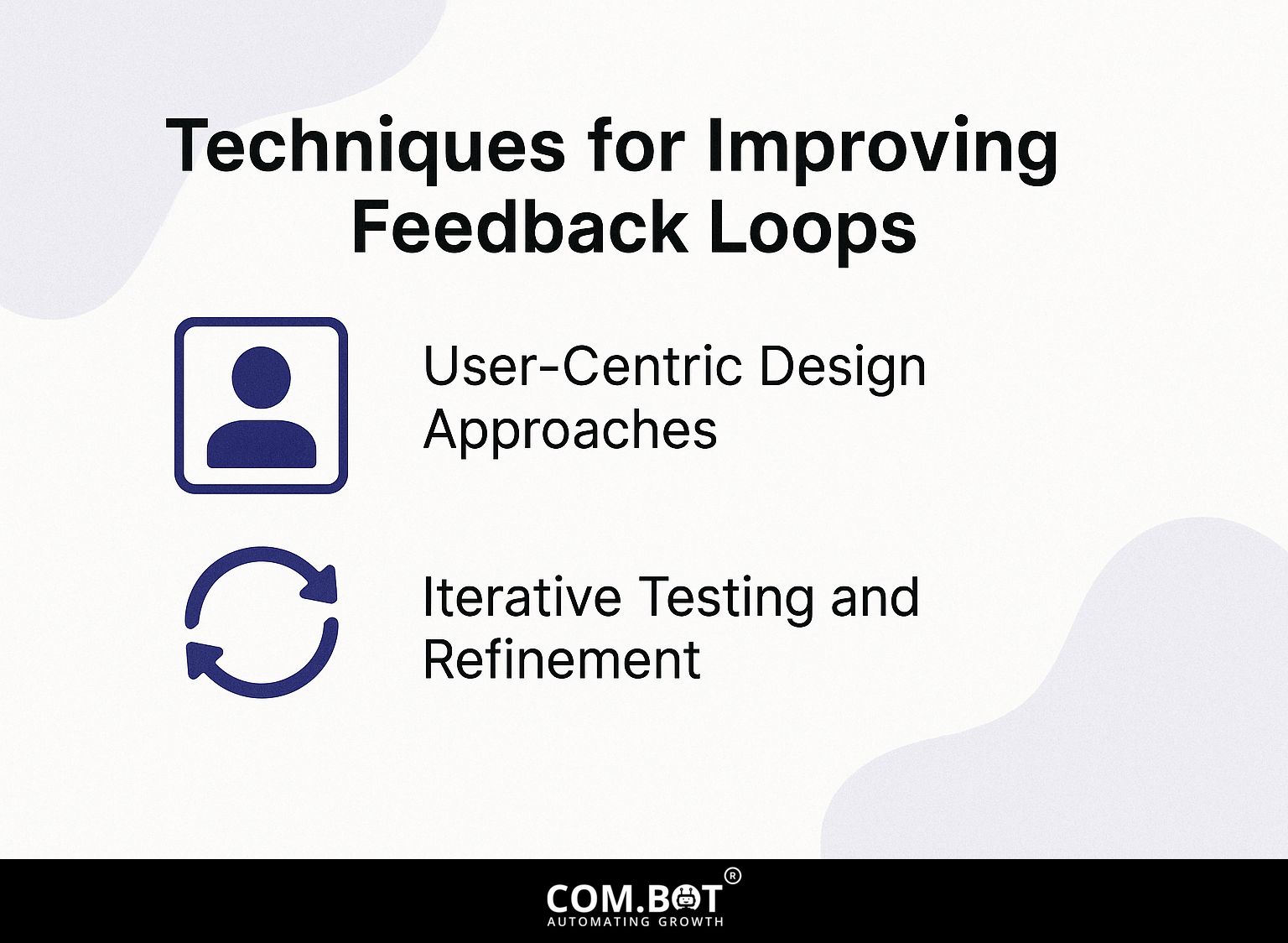
Making AI systems better depends on improving feedback processes by focusing on user needs and testing repeatedly.
User-Centric Design Approaches
Focusing on user-centered design allows us to collect genuine feedback from users, which makes AI more applicable.
When you include users early in the design process, you create a setting where their opinions are a key part of development.
For example, using tools like UsabilityHub lets you quickly collect feedback from users about design changes. Implement regular touchpoints, such as usability tests or surveys, to evaluate how users interact with your AI solutions.
Platforms like Hotjar can facilitate heatmaps and session recordings, revealing user behavior patterns. This information should regularly guide changes to features and interfaces, resulting in increased user satisfaction and more appropriate AI answers.
Iterative Testing and Refinement
Frequent testing and updates can improve the effectiveness of feedback loops by allowing ongoing adjustments based on their performance.
For example, using A/B testing allows you to compare two versions of a feedback tool to see which one connects better with users. Tools such as Optimizely or Google Optimize simplify the process.
Using platforms like SurveyMonkey or Typeform to carry out user feedback surveys provides you with direct details about what users like. By analyzing this data regularly, you can make targeted adjustments, enhancing user satisfaction and engagement.
Building an environment where people constantly get better is important for good feedback systems.
Case Studies and Applications
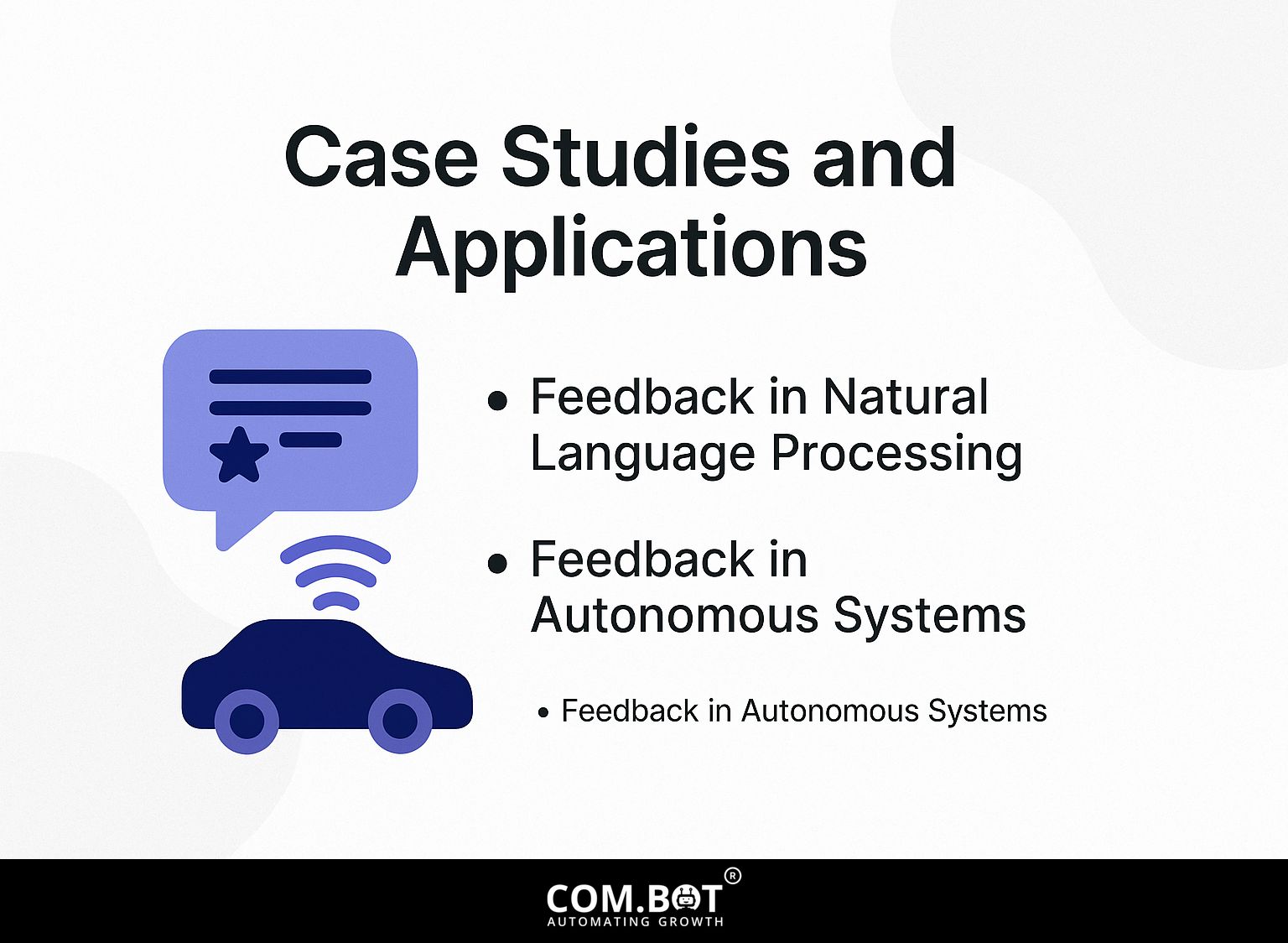
Feedback is essential for AI systems to work well in areas such as natural language processing and self-driving cars.
Feedback in Natural Language Processing
Using feedback from users in natural language processing helps improve model training and makes the results more aligned with what users want.
One effective method is using reinforcement learning from human feedback (RLHF), where models are trained to prioritize outputs that align with user preferences.
Tools like OpenAI’s fine-tuning capabilities allow organizations to provide datasets composed of user feedback and preferred responses.
For instance, by collecting interactions from customer support queries, a model can learn to prioritize concise and empathetic replies, thus improving user satisfaction.
Regularly updating the model with new feedback helps it adjust and improve its performance over time.
Feedback in Autonomous Systems
Immediate feedback is important for how self-operating systems work, allowing them to quickly change in fast-changing settings.
For example, self-driving cars use different sensors to collect information about what is around them. They rely on feedback loops that interpret this data-such as detecting pedestrians or changes in traffic signals-to make instantaneous decisions.
Companies like Waymo and Tesla integrate machine learning algorithms that continuously learn from real-world driving experiences, improving safety and efficiency over time. These systems often request user input in ambiguous situations, exemplifying the balance between automation and human oversight.
Future Directions
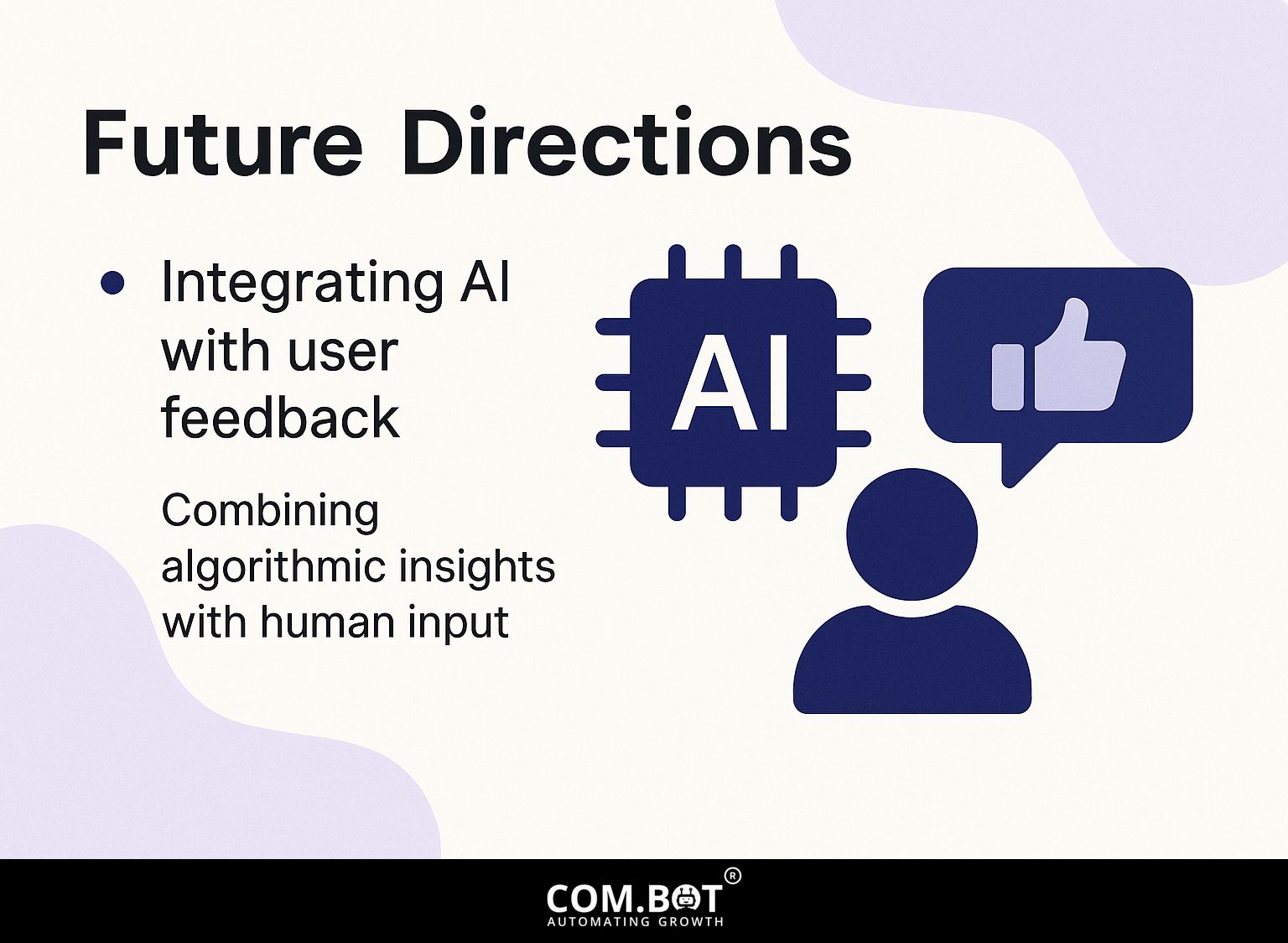
AI development will focus more on using user feedback to support ongoing learning and new ideas, emphasizing the importance of continuously refining these systems. For an extensive analysis of this trend, our comprehensive study on feedback for AI systems highlights key improvement techniques.
Integrating AI with User Feedback
Integrating user feedback into AI applications presents both challenges and opportunities for ethical AI development and improved outcomes.
To use user feedback well, set up clear ways to communicate, like surveys, focus groups, or live feedback tools like Hotjar. It’s important to be open and honest; tell users how their input affects AI actions.
Microsoft’s AI chatbot uses user interactions to improve its replies, encouraging ethical communication. Regularly update users on changes made based on their feedback, ensuring they feel valued in the development process.
Ethical considerations include safeguarding privacy and ensuring that the feedback loop doesn’t inadvertently reinforce biases. Finding the right mix of quick reactions and accountability is essential.
Frequently Asked Questions
What is the role of feedback in AI systems?
Feedback plays a critical role in AI systems as it allows the system to learn and improve its performance over time. It helps the system see its mistakes and learn how to make better choices next time.
Why is feedback important for AI systems?
Feedback is important for AI systems because it helps maintain the system’s accuracy and reliability. It also enables the system to adjust to different settings and improve decision-making using information available in real-time.
What are some techniques for improving feedback in AI systems?
Some techniques for improving feedback in AI systems include continuous learning, human-in-the-loop feedback, and self-assessment. These methods gather accurate and helpful information to improve the system’s performance.
How can feedback help to address bias in AI systems?
Feedback can help to address bias in AI systems by allowing for the identification and correction of biased data. By continuously receiving feedback, the system can learn to make more unbiased decisions over time.
What are the benefits of incorporating feedback into AI systems?
Adding feedback to AI systems can help make them more accurate, cut down on bias, and make the system work better overall. It also supports ongoing learning and adjusting to different circumstances.
Can feedback be used to improve AI systems in real-time?
Yes, feedback can be used to improve AI systems in real-time. With the advancements in technology, AI systems can now receive and process feedback in real-time, allowing for quick and efficient improvements to be made.
